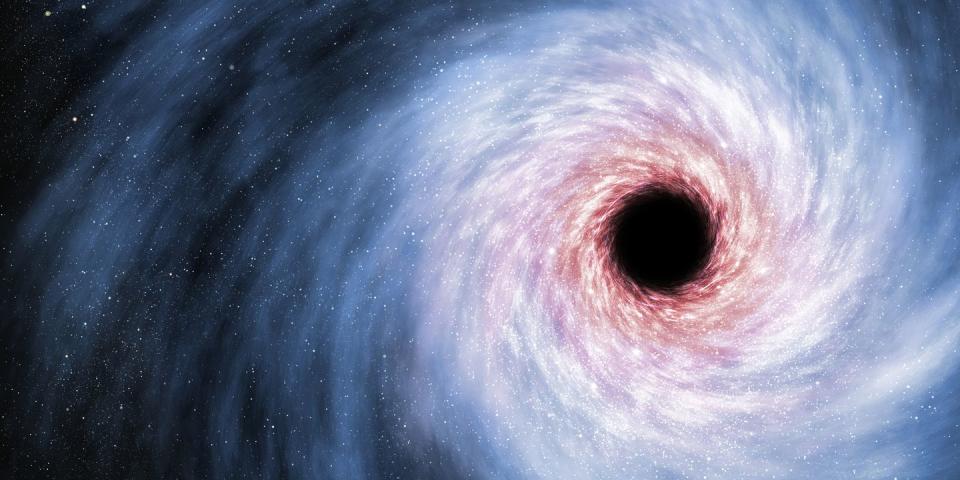Scientists Just Discovered One of the Biggest Black Holes. Ever.

Researchers just found an ultramassive black hole—one of the biggest black holes ever discovered.
They found it by analyzing the effects of the black hole’s gravity using a technique called gravitational lensing.
This is the first time a black hole has been found through gravitational lensing, and researchers hope they will be able to find more black holes this way in the future.
Nineteen years ago, a researcher saw a strange arc in some data. Almost two decades later, we finally understand what it was: an ultramassive black hole.
No matter how much we hear about them, or how prominently they feature in our fiction, black holes are still very mysterious to scientists. Because of how hard they are to spot—and how hard they are to directly observe even once they’re spotted—there’s a lot we don’t know about these massive gravity wells.
So, every time we spot a new one, there’s a lot we can learn from its observation. Especially if it’s part of a boundary-pushing subclass, or it was found in an unusual way.
In an exciting turn of events for researchers, the one featured in this new study falls into both of those categories. Ultramassive black holes are some of the largest individual objects known to us, tens of billion times larger than our Sun.
“This particular black hole, which is roughly 30 billion times the mass of our Sun, is one of the biggest ever detected and on the upper limit of how large we believe black holes can theoretically become, so it is an extremely exciting discovery,” James Nightingale, a researcher from Durham University and the lead author on this study, said in a press release.
And this monster was found in a really interesting way. That strange arc in the data that kickstarted the process of this discovery was an artifact produced by an effect known as gravitational lensing, making this the first black hole every to be found using that method.
Gravitational lensing is basically using some object out in the universe as a telescope. It’s often used to find exoplanets. If scientists want to check around a particular star to see if it is host to any other worlds, but that star is too far away to see in detail, they can position themselves so that there is another object directly in between us and the target. The light that leaves the target will be bent out of shape and magnified by the gravity of the object in the middle, allowing scientists to analyze the light from the target in more detail and spot things (like signatures of exoplanets) that they might have missed.
But interestingly, looking at gravitational lensing data allows you to see information on more than just the target. It also allows you to gather information about the object in the middle. And that’s exactly what happened with this newly-discovered ultramassive black hole.
Researchers analyzed the effect that the gravity of the middle object (in this case, a galaxy with a black hole at its center) had on the light from the object behind it. Once they saw the result, the ran multiple simulations to calculate how massive the middle object needed to be to generate the gravitation effect they were seeing. And what they found was that the middle galaxy must be home to a 30-billion-solar-mass ultramassive black hole.
Not only has this approach allowed scientists to investigate one of the biggest black holes ever found, but it’s also given them hope that they’ll be able to use gravitational lensing to find black holes in the future. It would be especially helpful for finding inactive black holes, which are currently impossible to study at large distances because they don’t produce the radiation we usually use to spot them.
Nightingale stated in a news release that this method “could let us detect many more black holes beyond our local universe and reveal how these exotic objects evolved further back in cosmic time.”
You Might Also Like

